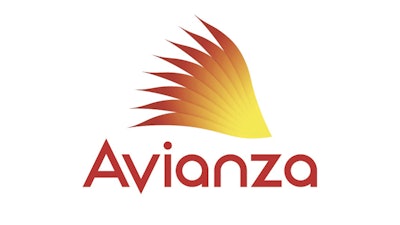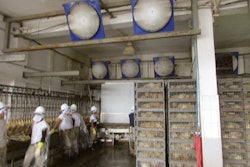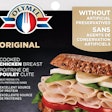
It is very much a case of new year new beginnings for the Spanish poultry industry. The country’s poultry producers’ association has adopted a new name and image, and a new campaign has been launched to increase sales of Spanish poultry meat overseas.
Avianza
Formerly known as Propollo, the Spanish poultry association is now known as Avianza. With 95% of the sector being members, including turkey and quail producers, dropping the Spanish word for chicken – pollo – and adopting the more general prefix “avi” better reflects the association’s membership.
The name change, however, has not taken place simply to better reflect the association’s membership, it has also been adopted as part of a campaign to strengthen the Spanish poultry industry’s image in overseas markets, where the name Avianza Export is being used.
Spain’s poultry meat exports have been rising over recent years, however growing exports further has become a key priority of members, the association notes, both to the rest of the European Union and globally.
To this end, late last year, the then Propollo entered into an agreement Spain’s Institute for Foreign Trade (ICEX) to launch a number of initiatives to help promote Spanish chicken in foreign markets. The agreement, which runs for two years, aims to raise exports in markets where the sector already has a foothold and to open new ones.
Exports
Exports had accounted for approximately 15% of Spain’s chicken production, with 55% going to the rest of the EU and the remainder sold beyond Europe’s borders. In 2019, overseas sales reached US$338 million.
Unsurprisingly, Europe’s COVID-19 control measures, particularly the closure of hotel and catering establishments, are thought to have hit Spain’s poultry exports hard last year, highlighting the need to diversify the markets into which the country sells. During the first five months of 2020, by value, exports are thought to have fallen by 20%.
Countries thought to now be of particular interest to Spain as part of its new export drive are China, Japan, the United Arab Emirates and Qatar.
Home market
Total chicken production in Spain is thought to have contracted by 5% last year. Despite consumer demand for chicken remaining strong with consumers, Spain, like other European countries saw closures of the hotel and catering industries, while the number of tourists visiting the country fell to the lowest level in 50 years.
With these important channels lost, or severely reduced, the industry has been following a number of initiatives to align its offering more closely with consumers and their changing preferences.
As in other markets, home delivery of food saw a significant increase last year and this trend is expected to continue growing. To ensure poultry’s position, the organization launched the Avianza challenge 2020, seeking not only to highlight how poultry could play an important role in Christmas festivities but also highlighting those companies offering home delivery of poultry products.
Additional direct marketing to consumers has sought, for example, not only to focus on ease of preparation in the home, but also on the variety of poultry meats that are available.
Broader change
Not all of the changes that Spanish industry is undergoing are in response to the changed market conditions brought about by COVID-19.
For example, data from the country’s Agriculture Ministry reveals that consumption of fresh poultry meat has been falling for some time. In 2015, it stood at 614,900 kg, but by 2019 had fallen to 570,700 kg. Consumer tastes and purchasing habits had been changing long before the novel coronavirus emerged.
In response to changing demand, the industry has been making investments in producing ready to eat and ready to cook presentations, and these have become more important as more consumers eat in home, however, the changes have not stopped there.
According to Jordi Montfort, Avianza secretary general, producers have also been making significant investments in modernizing facilities, adopting new sources of renewable energy and applying the principles of the circular economy and waste management, all of which chime with changing consumer expectations.

Various initiatives have been launched to raise poultry meat’s profile with Spanish consumers. Amongst these, a nationwide competition for chefs from six hotel and catering schools challenged with developing the best poultry dish that can be easily be enjoyed in the home. | Isaac Abad

















